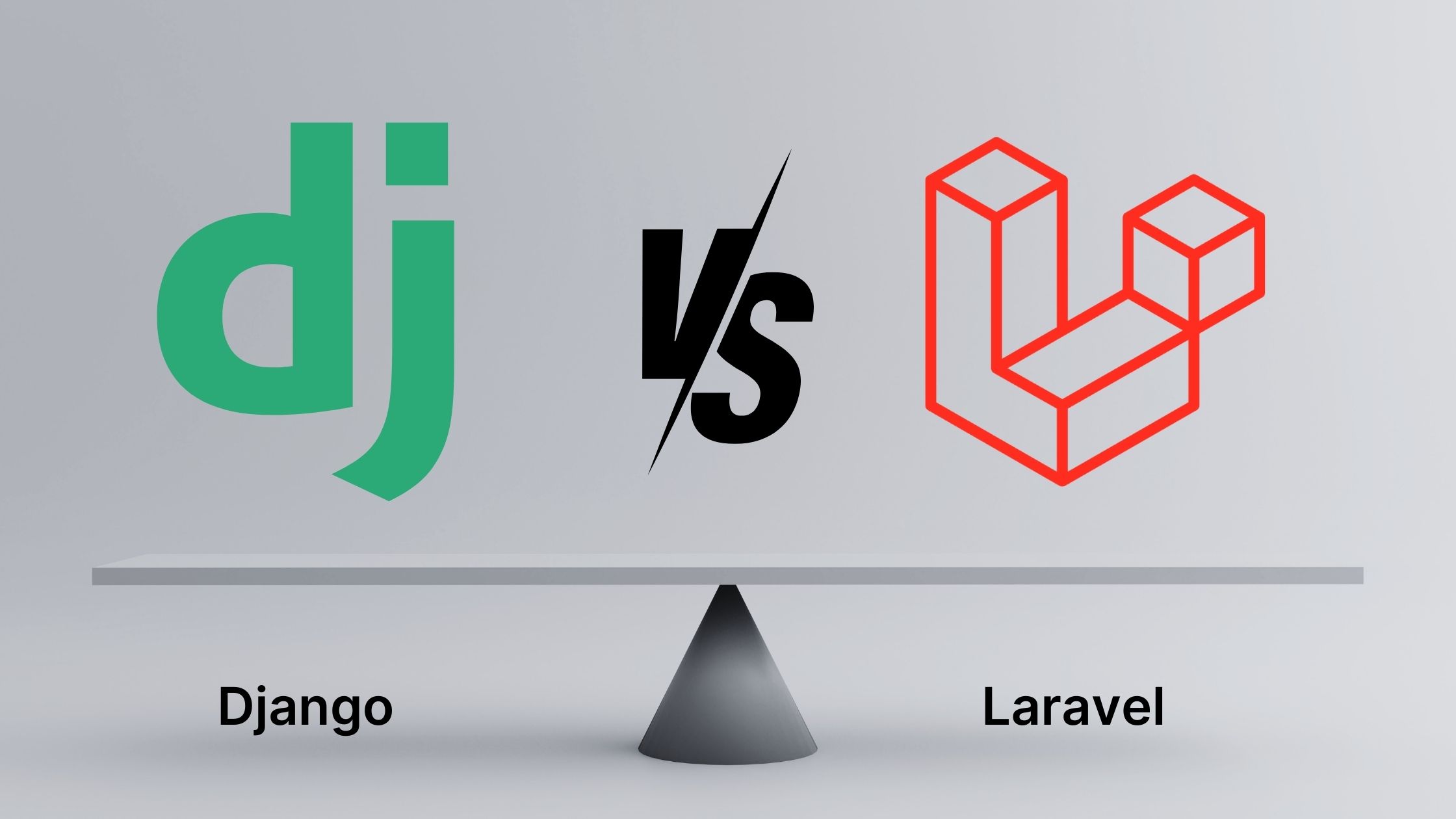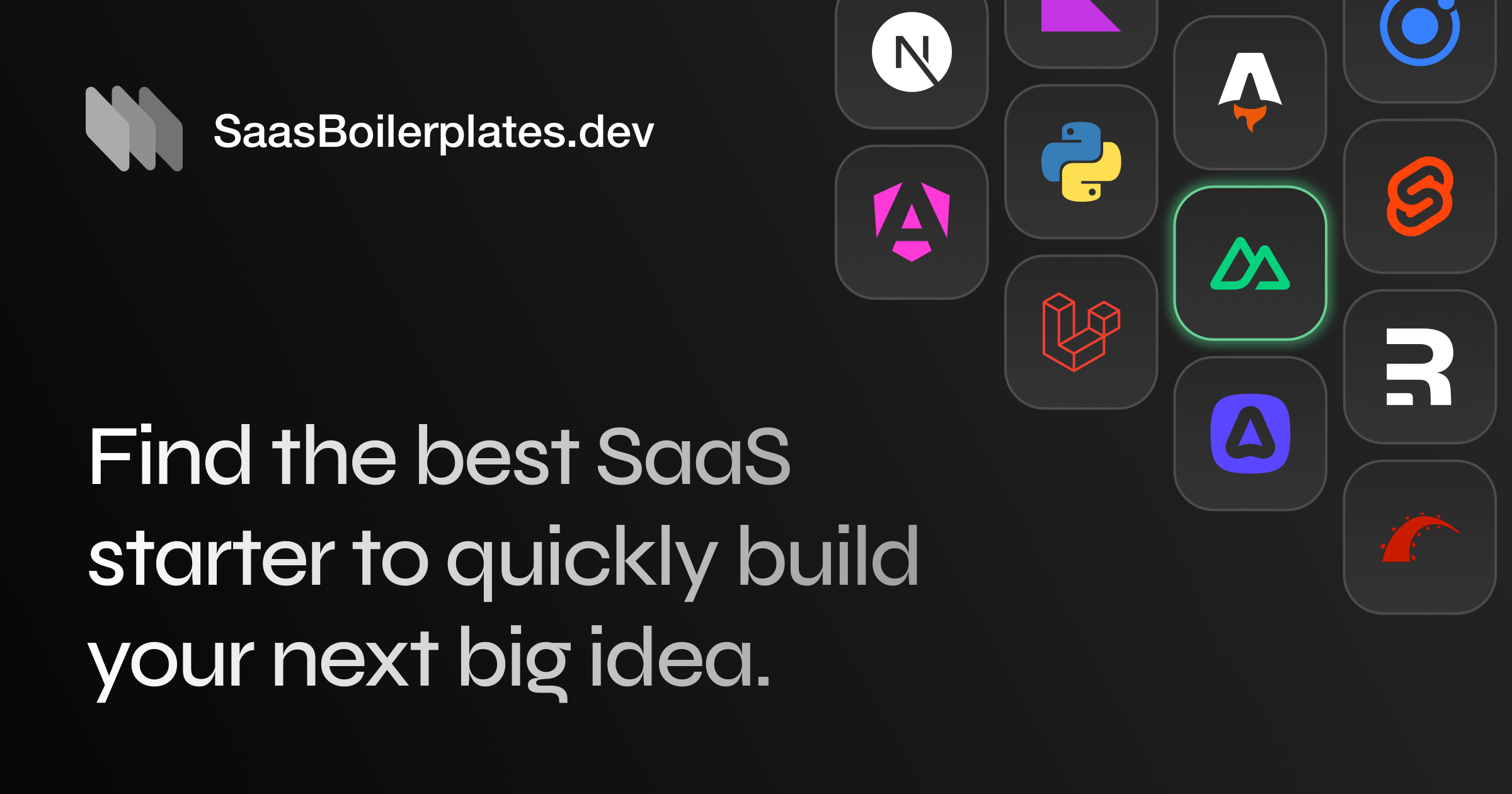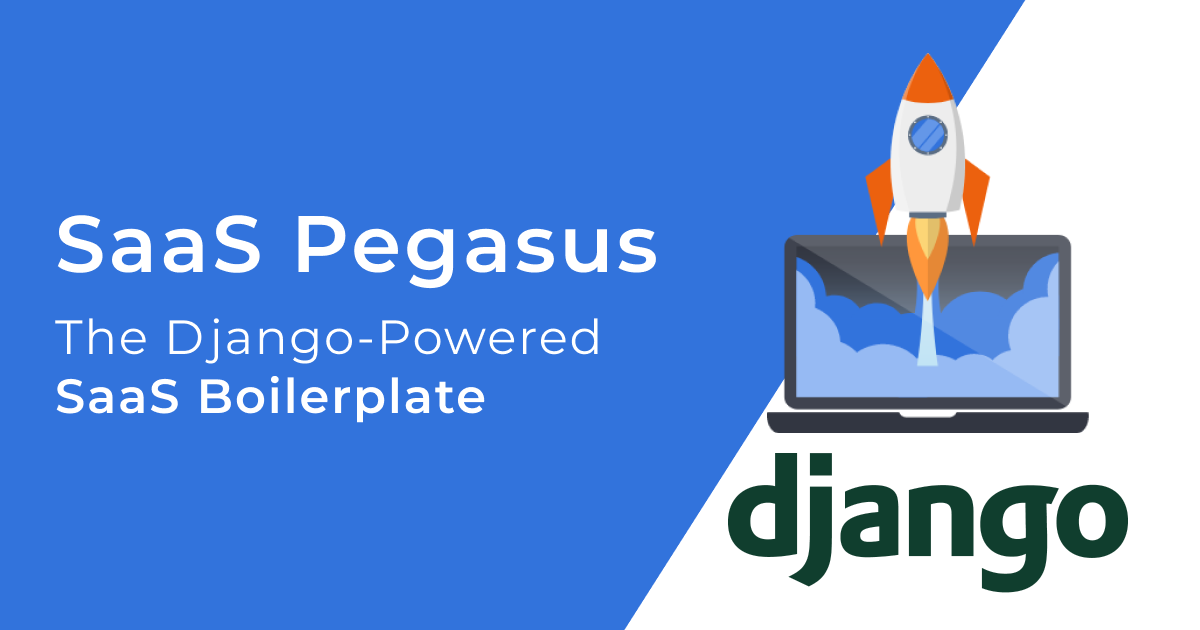Django vs Laravel - Best Framework for SaaS Startups
Learn the strengths and weaknesses of two leading frameworks for SaaS startups, helping you choose the right one for your project needs.

If you’re building a SaaS platform, choosing the right backend framework is critical. Django and Laravel are two popular options, each with strengths depending on your project’s needs. Here’s a quick summary:
- Django (Python): Best for data-heavy projects, AI/ML integrations, and teams already familiar with Python.
- Laravel (PHP): Ideal for fast development, robust frontend integration, and leveraging PHP’s ecosystem.
Quick Comparison
| Feature | Django (Python) | Laravel (PHP) |
|---|---|---|
| Architecture | MVT (Model-View-Template) | MVC (Model-View-Controller) |
| Learning Curve | Moderate | Moderate to Steep |
| SaaS Tools | SaaS Pegasus, Django Pixel PRO | SaaSykit, Larafast |
| API Development | Django REST Framework (DRF) | Sanctum, Passport |
| Payment Tools | Third-party packages (e.g., Stripe) | Built-in (Cashier, Spark) |
| Security | Strong built-in protections | Strong built-in protections |
| Scalability | Best for data-intensive tasks | Best for background tasks |
Both frameworks offer pre-built SaaS solutions, strong security, and tools for scaling. Your choice should align with your team’s expertise, project goals, and budget.
Django vs Laravel: Which Framework DOMINATES in 2025?
Django and Laravel Core Features
Let’s take a closer look at the core architectures of Django and Laravel. These two frameworks provide solid foundations for SaaS development, but they differ in their design patterns and underlying tech. Here’s what powers each framework.
Django: Python and MVT Architecture
Django relies on Python and the MVT (Model-View-Template) pattern. It’s structured into three main components:
| Component | Role | Key Features |
|---|---|---|
| Model | Handles the data layer | Manages database schema, relationships, and queries |
| View | Manages business logic | Handles requests and processes data |
| Template | Focuses on presentation | Renders HTML and dynamic content |
Python’s extensive libraries and tools make Django a strong choice for data-heavy SaaS applications.
Laravel: PHP and MVC Architecture
Laravel, on the other hand, uses PHP and follows the MVC (Model-View-Controller) pattern. Here’s how it’s organized:
| Component | Role | Key Features |
|---|---|---|
| Model | Manages the data layer | Uses Eloquent ORM for database interactions |
| View | Handles presentation | Blade templating engine for frontend logic |
| Controller | Oversees business logic | Manages routing, request handling, and responses |
Laravel’s Blade templating engine allows for flexible frontend development, while Django’s template system emphasizes a stricter separation of concerns.
Pre-Built SaaS Solutions
Both frameworks offer boilerplate solutions to speed up SaaS development. Laravel provides SaaSykit, and Django offers SaaS Pegasus. These tools come with essential features like:
- User authentication
- Admin dashboards
- Multi-tenancy support
- Payment integration
- API tools
These pre-built packages simplify the setup process, letting developers focus on customization and scaling.
When deciding between Django and Laravel, consider your team’s expertise and the specific needs of your project. Up next, we’ll dive into their performance, tools, and how they handle SaaS-specific challenges.
Speed and Growth Capacity
Speed Test Results
Performance benchmarks can differ significantly. Django, built on Python, excels in managing data-heavy operations, while both Django and Laravel show strong results when paired with proper caching and database optimization.
Managing Growth and Heavy Traffic
Both frameworks include features to handle surges in user activity. Django comes equipped with a caching system, support for asynchronous tasks, and an ORM tailored for managing large datasets. Laravel, on the other hand, provides tools like background job processing, built-in rate limiting, and flexible deployment options to handle high traffic effectively.
If you’re dealing with complex, data-intensive operations, Django is a solid choice. For handling scalable background tasks, Laravel stands out. Up next, we’ll dive into the development tools and support that set these frameworks apart.
Development Tools and Support
Getting Started and Documentation
Django and Laravel both come with detailed documentation and resources to help developers hit the ground running. Django offers tutorials and examples that make onboarding easier for Python-focused teams. Laravel, on the other hand, works seamlessly with the TALL stack (Tailwind CSS, Alpine.js, Laravel, Livewire), making it a go-to choice for modern web development. Both frameworks also include a wide range of tools that simplify SaaS development.
Available Tools and Packages
Both Django and Laravel offer SaaS boilerplates to cut down on development time. These pre-built solutions handle key tasks like authentication, billing, and multi-tenancy. Here’s a closer look at what each framework provides:
For Laravel:
- Wave: A starter kit that covers authentication, subscription management, invoicing, and user profiles.
- SaaSykit: A ready-to-use boilerplate with admin dashboards and multi-tenancy features.
For Django, SaaS Pegasus is the go-to boilerplate, offering the foundational elements needed for SaaS infrastructure.
| Feature | Laravel Tools | Django Tools |
|---|---|---|
| Authentication | Wave | SaaS Pegasus |
| Billing Integration | Laravel Cashier, Spark | Django-stripe |
| Multi-tenancy | SaaSykit | SaaS Pegasus |
| Admin Dashboards | Filament, Nova | Django Admin |
| API Development | Laravel Sanctum | Django REST Framework |
Both frameworks also integrate easily with third-party services like Stripe and PayPal for payments, AWS and Heroku for cloud hosting, and databases such as PostgreSQL and MongoDB. These integrations allow developers to focus on building standout features for their SaaS projects.
SaaS Features Comparison
User Systems and Access Control
Both Django and Laravel offer strong authentication systems, but they take different approaches. Django includes a built-in system that manages user accounts, groups, permissions, and cookie-based sessions right out of the box. Laravel, on the other hand, provides flexibility through its Auth facade and Guards system, allowing for more tailored implementations.
| Feature | Django | Laravel |
|---|---|---|
| Built-in Auth | User model, admin interface | Multiple auth guards, policies |
| Role Management | Group-based permissions | Gate facades, policies |
| Session Handling | Database-backed sessions | File/Redis/Database sessions |
| Password Reset | Built-in views and forms | Pre-built notification system |
Payment and Subscription Tools
When it comes to payment and subscription management, Laravel and Django take different paths. Laravel includes native tools like Cashier for subscriptions and payments, making it easier to implement these features. Django relies on third-party packages for similar functionality, offering more customization but requiring additional setup.
| Capability | Laravel | Django |
|---|---|---|
| Subscription Management | Built-in Cashier | Third-party packages |
| Payment Processing | Native Stripe/Paddle | Custom implementations |
| Invoice Generation | Automatic via Cashier | Manual/Third-party |
| Webhook Handling | Built-in handlers | Custom setup required |
API Development Tools
Django and Laravel both shine in API development but cater to different needs. Django REST Framework (DRF) offers a feature-rich toolkit for building APIs with serialization and authentication capabilities. Laravel’s Sanctum provides a lighter option for API token and SPA authentication, while Passport supports more complex OAuth-based needs.
| API Feature | Django Implementation | Laravel Implementation |
|---|---|---|
| Authentication | Token-based (DRF) | Sanctum/Passport |
| Serialization | Built-in serializers | Resource classes |
| Rate Limiting | DRF throttling | Built-in middleware |
| Documentation | Auto-generated schemas | OpenAPI/Swagger support |
These tools make API development seamless, and the availability of specialized boilerplates can further simplify the process for SaaS projects.
Best SaaS Boilerplates
Pre-built boilerplates can save hours of development time by integrating essential SaaS features from the start. Directories like Best SaaS Boilerplates offer curated solutions for both Django and Laravel, making it easier to launch fully functional SaaS products quickly.
| Framework | Popular Boilerplates | Key Features |
|---|---|---|
| Django | SaaS Pegasus, SaaS Hammer | Payment integration, API support |
| Laravel | Larafast, RapidSaaS Conduit | Auth, subscriptions, API tools |
These boilerplates are designed to simplify deployment by bundling secure and scalable features, ensuring a smoother path to launching SaaS applications.
Security Features
Default Security Protections
Both Django and Laravel come with strong built-in security features designed to handle common vulnerabilities. For example, Django’s ORM uses parameterized queries to block SQL injection, automatically escapes templates to guard against XSS attacks, and provides CSRF protection via middleware and tokens. Similarly, Laravel’s Eloquent ORM relies on prepared statements, while its Blade templating engine includes automatic escaping to counter common threats. Both frameworks also offer secure session management, password hashing, and measures to prevent click-jacking.
| Security Feature | Django | Laravel |
|---|---|---|
| SQL Injection Prevention | ORM with parameterized queries | Eloquent ORM with prepared statements |
| XSS Protection | Auto-escaping in templates | Automatic escaping in Blade templates |
| CSRF Protection | Middleware with tokens | CSRF middleware with tokens |
| Session Security | Signed cookies, secure settings | Encrypted cookies, configurable drivers |
| Password Storage | Multiple hashing algorithms | Bcrypt, Argon2 support |
| HTTP Headers | SecurityMiddleware | Security middleware |
| Click-jacking Protection | X-Frame-Options | Frame Guard middleware |
Maintenance and Security Updates
Django provides long-term support (LTS) versions, ensuring extended coverage for security patches. Laravel follows a schedule of regular updates with quick patch releases. Both frameworks rely on package management systems, making it easy to apply security updates and monitor dependencies efficiently.
These built-in security measures are especially valuable for SaaS startups, helping developers focus on scaling their applications without compromising protection against threats.
Making the Final Choice
This section breaks down the key technical differences to help you decide which framework suits your project best.
Main Framework Differences
Django is built on Python and shines in handling complex data tasks and AI/ML applications. On the other hand, Laravel, powered by PHP, is ideal for fast web development and smooth frontend integration.
| Feature | Django | Laravel |
|---|---|---|
| Language | Python | PHP |
| Architecture | MVT (Model‐View‐Template) | MVC (Model‐View‐Controller) |
| Ecosystem | Geared towards data and AI projects | Tailored for web-focused projects |
Framework Selection Guide
Django might be the right choice if your project:
- Needs advanced data handling or AI/ML capabilities.
- Relies on a team skilled in Python.
- Requires strong built-in tools for developing complex SaaS applications.
Laravel could be better suited if your project:
- Prioritizes quick development and launching an MVP.
- Aims to provide a dynamic and engaging frontend experience.
- Plans to take advantage of PHP’s extensive ecosystem.
Budget considerations: Laravel’s Wave is free, with premium tools like SaaSykit starting at $219. For Django, SaaS Pegasus begins at $249, but free options like DjaoDjin are also available.
Choose the framework that matches your team’s expertise, project goals, and budget to set your SaaS project up for success.
Recommended SaaS Boilerplates
Apart from the one mentioned above, here are some other SaaS boilerplates for both Django and Laravel that come highly recommended by the developer community:






